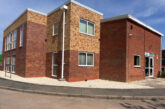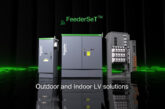
From their introduction in the late 1800s consumer units have seen many design changes to improve functionality and safety. The team at Europa Components takes us through some of the key amendments.
Interestingly the original designs of consumer unit featured wooden frames and back plates. Seasoned electricians will also remember rewireable fuses; some older installations still feature these as the means of overload and short circuit protection but they were eventually replaced by cartridge fuses and now MCBs.
Although their physical appearance has changed from their first inception with push buttons, MCBs remain the most common form of overload and short circuit protection in consumer units today.
In 2001 the BS7671 wiring regulations stated that RCD protection should be used in new installations for all sockets that could “reasonably be expected to” supply outdoor equipment. The older style consumer units couldn’t accommodate an RCD, so the options were to use a modern consumer unit or the addition of a self-contained RCD unit (local socket protection came later).
An update to the BS7671 wiring regulations required that all domestic sockets (with some exceptions) be RCD protected. Initially there were many instances where the RCD was placed in circuit after the main switch, providing RCD protection to all outgoing circuits. This wasn’t good practice though as it could potentially lead to the unsafe loss of all power and lighting if the RCD tripped; this type of arrangement also gave rise to nuisance tripping.
To rectify these problems, it became common to split the circuits into those that didn’t require RCD protection, fed from the mains switch via MCBs, and those that did, fed from the RCD via MCBs. Split load consumer units were designed to make installation easier.
A further update to BS7671 stated that cables installed in walls less than 50mm deep and without mechanical protection also required RCD protection (with some exceptions). This meant that lighting now had to be protected and led to the common use of dual split load consumer units featuring two RCDs.
For safety purposes the circuits are split with the upstairs lights and downstairs sockets on one RCD and the downstairs lights and upstairs sockets on the other RCD. This way power (lights or sockets) will be present on both floors should either RCD trip. Safety circuits, such as fire alarms, aren’t generally protected by RCDs so are installed in circuit directly after the main switch.
There could still be issues complying with the regulations where separately controlled circuits must not be affected by the failure of other circuits. The use of RCBOs overcomes this issue and is perhaps the best method of circuit protection as it covers all aspects of RCD protection contained within the 17th Edition.
In 2015 Amendment 3 (BS7671 IET) required all domestic consumer unit enclosures be manufactured from non-combustible material, something that was introduced by the London Fire Brigade after a considerable increase in calls to domestic fires originating within plastic consumer units, usually due to poor connections, and spreading from there throughout the property. The amendment came into force in January 2016 for all new installations.
Today’s consumer units look very different to the ones of yesteryear and feature modular contactors and timers alongside main switches, RCDs, MCBs and RCBOs. Now the 18th Edition of the BS7671 regulations is sure to once again change the configuration and components housed within our consumer units, where the focus on energy efficiency and conservation will most likely be prevalent.
For more information about the range of circuit protection devices available from Europa Components visit: www.europacomponents.com








